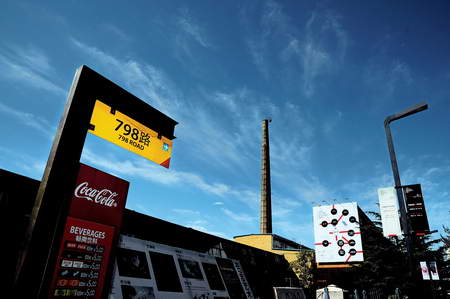Redesigning China's creative image
 |
|
798 Art District [Global Times] |
Aside from government support, China's presence as a promising new creative center is also based on its self-emerging creative parks such as the 798 Art District, according to David Kester, chief executive of Design Council, UK.
Kester explained that many international brands, such as Nike and Kappa, have settled in this creative district, looking for fresh ideas from the diverse artistic creations on offer. "They are inspired by Chinese traditional as well as modern culture," he said.
Automobile giant Daimler's 5th Advanced Design Center is scheduled to be unveiled in Beijing in the near future, according to automobile designer Olivier Boulay, who was appointed as head of the center earlier this year.
"Our design center in Beijing will bring the brand more Chinese traditional elements," Boulay explained, adding that they will also work with local Chinese designers. "We chose Beijing as our 5th design center largely because of its huge potential to be a design center and also its market here."
However, from the view of critics, China still has a long way to go to become an international design center and much effort is needed in terms of changing its selfimage of imitation and piracy, Keane said.
He added that although Beijing Design Week and the International Design Congress would help Chinese designers open their eyes and to some extent shorten the distance between Beijing and international design centers such as Paris and New York, Chinese designers need to reflect back on traditional culture to gain inspiration and not try to imitate international designs.
According to economist Gu Shengzu, who is also known for his research on industrial design, the most urgent problem that needs to be addressed is the one of educating designers.
"Without the emergence of a large group of creative talents, there is no hope to talk about becoming an international design center," Gu said. "Indeed, local designers who can deftly combine international and traditional Chinese culture together are particularly needed in every aspect of Chinese design life."
 0
0 







Comments